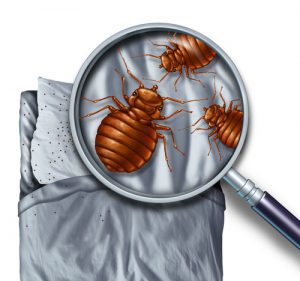Do Mattress Encasements for Bed Bugs Really Work?
By Chris Williams on May 9, 2011.
Q. My daughter’s dorm had bed bugs in a couple of the other girls’ rooms and she’s freaked out! I’ve heard about these coverings that you can get for your mattress to keep bed bugs out. Do they really work?
A. They’re called mattress encasements and yes, they do work…IF you get the right kind of encasement and IF it’s properly installed. A properly designed encasement completely envelops and seals the mattress and box spring, trapping bed bugs inside. The bed bugs are then unable to feed and will eventually starve. In addition, once the bed is protected by an encasement, other bed bugs cannot get into the mattress or box spring. They can only get on the surface of the encasement where they are easy to spot and remove.
Mattress encasements offer four advantages for bed bug control:
- Encasements provide preventive protection of beds. When newly introduced bed bugs reach the bed, their movement is restricted to the outside of the encasement, preventing them from hiding in the mattress or box spring.
- Encasements protect replacement beds. In an infested home or dorm room, encasements can be used to protect new mattresses and box springs that have been brought in to replace infested beds.
- Encasements allow people to keep their infested beds. Many people are simply not in a financial position to discard bed bug infested mattresses and box springs. In fact, experts say that getting rid of infested mattresses and box springs is not only unnecessary but can actually spread bed bugs when people scavenge discarded mattresses.
- Encasements make bug bug control easier. Encasements eliminate the time-consuming inspection and treatment of mattresses and box springs since bugs will be trapped inside or restricted to the outside of the encasement where they can be more easily dealt with.
Not just any mattress encasement will work. Make sure you get an encasement that specifically mentions bed bugs. There are several different brands to choose from these days. Some are designed with special seams and zippers specifically to protect against bed bugs. Others were originally designed for allergy protection, but subsequent testing has shown some to be effective against bed bugs as well.
The encasement must be bed bug “bite proof” and “escape proof.” Bed bugs will squeeze their way through zippers and seams whenever possible in order to feed.

The zipper end stop is the number one place for escaping bed bugs. The encasement should enclose the zipper tab to eliminate any gaps. Be sure that any claim for protection against bed bugs is backed by scientific testing. Standard mattress covers designed to simply protect mattresses from dust and bodily fluids will be ineffective against bed bugs.
It’s very important that you get the right size encasement for the bed since encasements are only effective as long as they fit tightly. The encasement should match the size of the mattress or box spring. Be sure to measure the mattress and box spring separately since each will have different dimensions. You should put encasements on both.